Is ANYONE happy with downdraft ventilation? (allow me to vent)
Background:I have a galley kitchen, 8 foot by 10 foot. Door to garage on one end (north wall), door to dining room on the other (South wall). The east wall is an exterior wall, and has the plumbing on that wall, so we will keep the sink and dishwasher on the east wall. The refrigerator goes over there too (for other reasons, namely, I don't want the door to the garage to smack it anymore).
That leaves me with the west wall, which faces the living room. This kitchen is like a tomb, so we want to remove the upper part of the wall, the 2/3 of it that is not over an open stairway to downstairs. This will create an open 'peninsula' type counter, no upper cabinets or wall, that we will allow some seating on the opposite side. Sounds lovely!
With this set up, the only way I can envision having the cooktop, is a slide in right in the middle of the counter in the open area, that will not have an upper wall to affix a typical vent hood. (If I put the stove on the other end, where we won't take out the wall, I will get hit with a door when someone comes home if I am cooking)
I am sure you know where this is going. . .
We have been looking at island type vents, the type that drop right down from the ceiling, and my goodness they are so expensive.
Today, while checking out another appliance store, we discovered the Jennaire gas range with the downdraft ventilation. The lady at the store said they sold a lot of them to go in islands because of the venting issue.
I was so pleased, a solution!! Then I come on here and find they are not thought very highly of. I knew there was a reason I had never heard of them.
I really really want this downdraft system to be adequate. Those vents that don't affix to a wall are so very very expensive, and I don't really WANT a vent hood between me and the living room view while I cook. I also don't have a a huge budget, and I just hate to put so much money into a vent hood that could go for something I would enjoy.
Does anyone think their downdraft ventilation system is "fine". I don't expect them to be great, but I am looking for at least adequate. Right now we have one of those over the stove microwave vents, that just recirculates air back into the room, after supposedly blowing it through a filter. Gotta be better than that, right? Right?
Comments (73)
Angie Haywood
8 years agoI am building a 2700 sq ft home with a moderate size kitchen that opens to the living area. The electric cooktop is in the island. I am trying to get info on vent vs. no vent. Budget and plan does not include an overhead vented hood. Most downdraft reviews state the mediocre performance of down drafts and telescoping down drafts. But truthfully, I'm wondering if I need a downdraft anyway. My kitchen and great room have 10 ft ceilings. Or has anyone ever installed ventilation fans (similar to bath type) in their kitchen ceilings?
lisa_a
8 years agolast modified: 8 years ago"But truthfully, I'm wondering if I need a downdraft anyway."
We are in the process of reno'ing our kitchen, moving our cook top from island to the perimeter to gain more work space around it (going from 16" each side to 42" one side and 22" on other) and better venting.
I think DH thought I was nuts about wanting good venting until he saw the sticky, icky coating of grease on the kitchen window valances from 21 yrs of inadequate pop-up downdraft venting. So gross!
I strongly encourage you to add venting, no matter the height of your ceilings. Pop-up downdraft venting isn't as good as overhead venting but it's so much better than it was when we built 21 yrs ago and it's definitely better than nothing. Your new home will be quite air tight; venting will help eliminate cooking odors and airborne grease from your home.
Have you priced pop-up downdrafts? They aren't cheap. I found island hoods that were roughly the same price but installation would have cost us more (we already had downdraft venting ducting in place). In a new build, it may be comparable in price.
Related Professionals
Arlington Kitchen & Bathroom Designers · Brownsville Kitchen & Bathroom Designers · Palm Harbor Kitchen & Bathroom Designers · Roselle Kitchen & Bathroom Designers · Soledad Kitchen & Bathroom Designers · Sun City Kitchen & Bathroom Designers · Grain Valley Kitchen & Bathroom Remodelers · Martha Lake Kitchen & Bathroom Remodelers · Shawnee Kitchen & Bathroom Remodelers · Skokie Kitchen & Bathroom Remodelers · Ridgefield Park Kitchen & Bathroom Remodelers · Burr Ridge Cabinets & Cabinetry · Mount Holly Cabinets & Cabinetry · Scottdale Tile and Stone Contractors · Castaic Design-Build Firmsbarbch01
8 years agoI have had my Jennaire electric cooktop for nearly 21 years and cannot recommend it more highly! The downdraft is extremely efficient, be it a little noisy when on full speed, but this is needed rarely. The real benefit after many years of overhead exhaust has been far less cleaning of wall tiles and ceiling (once in a blue moon). Ours is in the end corner of a galley style kitchen with a tool bar above it holding stainless utensils (ladles, whisks, small sauté pans) which do not collect the greasy dust one would usually have from gear stored above a hotplate.
info4432
8 years agoOoops. I have an 18 year old thermador dual fuel range with a thermador downdraft ventilation system (pop-up variety). Model RDSS30. I've fixed it multiple times. The most recent time...I goofed and cracked one of the aluminum gas tubes for one of the front burners. And guess what...the part is not made anymore. Spouse not happy. I capped the 4th burner and we're living with 3 burners for now.
I missed on a recent craigslist post for the exact duplicate range. Oh well. They come up periodically for sale but it's not often.
I'm still trying to figure out who can custom fabricate the gas line. But the conversation has definitely been stimulated about what to do.
We have an open concept kitchen and we really didn't want an overhead hood. The downdraft ventilation with the popup style works pretty well, best if you are using the back burners.
Dacor makes a range with downdraft but very expensive and too deep for our kitchen (it will jut out 2 inches more than our current one). Kitchenaid just introduced a new downdraft....hmm.....but it is the Jenn-Air style of ventilating and I am skeptical.
Question: Can I keep my thermador downdraft venting system and simply slide in a new dual fuel range? The venting, etc in our basement is all there, along with an external vent.numbersjunkie
8 years agoIt depends on how you cook, at least IMO. And it often comes down to a trade-off of some sort. I opted for a downdraft (Kitchenaid retracting) with my induction coopktop which is in an island. It works fine for us, but we don't do a lot of frying. Steam from boiling water does escape upward, but it does suck out smells and after 5+ years my 8 ft white ceiling still looks fine. If you want a gas range, I think thats more of a problem because as I undersatnd it, the downdrafts tend to suck the flame towards the downdraft so you might not get to the powerful heat you would otherwise.
Scott Abery
8 years agoLook at the Best Cattura, coming out January 2016. I know it does not help some of you now but the features look impressive. Comes up 14", two suction areas with a far quieter motor than in the past. can mount the motor many ways and in or outside also.
The Art Folk
8 years agoHi,
I have similar problems with a very open kitchen, it has no walls with a floor to ceiling window one end, and an opening at the other. I am looking into getting a downdraft range hood. I am in Australia, there are only 4 options available. They are all expensive - the cheapest is $3200, the most expensive is $4500. I would love to know how much they are in other countries, as I am considering getting one shipped over here. The brands I have found are Sirius, Wolf and Smeg. If any lovely people have prices a website link will also be appreciated! I don't really care which brand it is, as long as it will work with a gas stove top and Ikea cabinets. I have a range hood in my current kitchen and only use it when I burn something! Thanks :)
deniselipper
8 years agolast modified: 8 years agoI've had a Thermador downdraft system for 30 years. I had one installed when no one had ever heard of them or recognized it once it was installed. I am building another home and a downdraft system is a MUST... absolutely invaluable to my expectations for a perfect kitchen.The Dacor 46" cost is $1350. as is the Thermador 36". I'm sure the motors and other necessities are extra. I have had not one issue, problem or repair done to my Thermador system in 30 years.
boop2
8 years agoI have a 22 yr. old Jennaire electric range that I have had ONE service call on early on. I am now looking for a replacement be cause I would like to have a dual fuel range. I want a gas top and an electric oven and the first place I'm looking is for a Jennaire.Personally I love the downdraft because all odors and smoke go outside. Definitely want down draft ventilation. If you consider downdraft a problem, the only one that I have is my BH coming in from outside saying "if you don't turn that ventilation off, we will have the whole neighborhood coming over to eat)"
Buehl
8 years agolast modified: 8 years ago"...Personally I love the downdraft because all odors and smoke go outside..."
Ummm....Venting to the outside is what takes odors outside, NOT a downdraft. Any hood can be (and should be) vented to the outside.
I don't think the most recent posters really understand what is being asked. It doesn't matter that you didn't need repairs or service calls, what really matters is:
1....How truly effective it is at venting odors, etc., outside - for ALL cooking, not just items in short pots/pans right up next to the downdraft or simple lightweight cooking. All types of cooking - frying, boiling water (including for pasta in a tall pot), browning meat, etc.
Many telescoping downdrafts work fine for short pots/pans right up next to the fan (shorter by a couple of inches than the top of the fan) and steam or "lightweight" grease - but they don't do very well on taller pots/pans or when the pots/pans are not right next to the fan or a lot of grease, etc. (If you have a center telescoping downdraft with 4 burners (2 on each side), then all burners should be right next to the fan, so that, at least helps.)
Why do they not work as well as overhead hoods? The biggest reason is that they have to work against gravity and the way steam/odors/etc. rise, not fall.
As steam, odors, smoke, grease, etc., rise and spread:
- An overhead hood captures it into the "cup" that keeps it in the hood and vents it up and outside. Pots/pans can be anywhere under the hood and any size.
- A downdraft has to struggle to get it b/f it rises (assuming the pot/pan is shorter than the fan) and force it down.
If the pot/pan is taller, then it has to try to grab from above and force down - it has to be very, very powerful to do that.
If the pot/pan isn't next to the fan, then it has an even more difficult job, bring it over and then forcing it down.
2....How noisy it is
.
I've used a telescoping Dacor - it doesn't really work and it's loud! Yes, it does interfere with the gas burners (it was paired with a Dacor gas range)
I have a friend with a Jenn-Air and she says she doesn't bother to use it b/c it doesn't really do anything - she doesn't notice any difference when she uses it compared to when she doesn't - the grease, odors, etc., go everywhere (yes, it's vented to the outside). (When she remodels, she's getting rid of it and moving the cooktop to the perimeter - it's in an island and she hates it there!)
I have no experience with Thermador, so I cannot say how effective it is.
...................................................................
For those of you who don't want a hood hanging in the middle of the room - the solution is simple - put the range/cooktop on the perimeter where it belongs! Put your Prep Zone in the island or peninsula. The vast majority of people spend 7 or more times prepping than cooking - so put the Prep Zone in the better spot!
- Prepping: 70% or more of your time working in the Kitchen
- Cooking: 10% (actually watching food cook or stirring/adding ingredients)
- Cleaning up: 20% or less (clearing the table, wiping down counters, loading/unloading the DW, handwashing a few items)
...................................................................
An overhead hood will always be better than a comparable downdraft - but it's up to you whether you care. If looks are more important to you than function, then go with what gives you a better look.
I think the bottom line is that if someone doesn't know what a really good hood does, anything will seem good if it does even a little bit. It's sort of like when people ask for layout help and don't understand when the layout is pointed out as dysfunctional - it's all they know, so they think it's fine. Once they see what a good design looks like, they realize how much better it can be!
In the end, it's your kitchen and home - so you make the final decision. If you decide on a downdraft at least you're making an informed decision.
Carrie B
8 years agolast modified: 8 years agoI'd seen downdraft discussed on here, but had never seen one (or, really, never noticed one, since I never much paid attention to kitchens in general before hanging out here/planning my new kitchen.)
Several weeks ago, I was visiting a cousin & noticed that she's got a Jenn-Air gas range w/ built in downdraft. She told me that she hates the range itself, and that she usually forgets to turn on the downdraft because she can't tell the difference when she does turn it on.
cpartist
8 years agoI would also ask about the differences in the appliance forum as they can really explain the difference. BTW: I too have a friend with a downdraft. She hates it and wishes she hadn't been talked into it.
joebates100
8 years agoIt depends on your cooking style. Down drafts definately do not have the power of an overhead vent. If you cook high heat, fry, use a wok etc you may regret the decision. Stove tops on an island for someone who cooks a lot and fries anything are problematic. Grease splatter everywhere.
StarCraft Custom Builders
8 years agoA couple of points:
Those of you who do not use a venting system are asking for trouble. A typical household produces up to 200 lbs of cooking particulates each year, and they have to go somewhere. A venting system directs most of them to the outside where they do no harm (at least as far as we know (future research may discover that they are a primary cause of sun spots, alien invasions, flooding in Siberia, or some other ecological disaster).
If they stay in your house the eventually land on a surface, where they stick. After a few years you should notice the result. Clean one cabinet with a good mild cleaner, then compare to the rest of the cabinets. Yech!

If you don't like the look or bulk of a conventional island vent, and don't think downdraft vents are very effective (many are not), then look at a ceiling-mounted skylight hood (if your ceiling is 8' or less) that mount directly to the ceiling, out of the way and largely out of view. Futuro is one brand with which we are familiar. There are others. The vent provides both ventilation and light for the cooking surface.

The drawback is that you will need a ladder to remove the filters for cleaning and it draws more than 350 cubic feet per minute (cfm), which may require make-up air, depending on where you live. A ventilator that draws more than 150 cubic feet per minute (cfm) of air for every 100 sq. feet of occupiable living space, will generally require a make-up air system (ASHRAE 62.2). This is code in many localities, and necessary whether it is code or not to prevent back-drafting which could draw carbon monoxide into your home.
A make up air system includes a remotely controlled vent that opens automatically to let in some outside air when you turn on the kitchen ventilator. These can get expensive, and is required more often than you might think. So, check with your HVAC contractor to see if it is needed.
You are also exhausting air that you already paid to heat, and replacing it with cold air that needs to be heated -- a continuing additional operating expense. To preserve the heat, a heat-recovery system may be required in your locality (usually a part of the energy code, not the HVAC code, and often missed) to extract the heat from the air leaving your house, and re-using it to heat the air coming into your house. These are also expensive.Never buy a no-name vent from Overstock or anywhere else. The low prices are tempting, but when it
breaks, and it will eventually, a no-name vent has no source for repair parts.funkycamper
8 years agoJust curious. I've heard about the carbon monoxide entering the home via a backdraft but what creates the carbon monoxide? Where does that come from? Anybody know?
User
8 years agolast modified: 8 years agoIt comes from any other combustion appliance in the home such as the furnace, the water heater, or a fireplace. In backdraft conditions, fuel doesn't burn cleanly and will create all kinds of icky substances.
funkycamper
8 years agoI guess I don't understand the physics of it. If the furnace chimney/exhaust is, let's say 30 feet from where the hood vents, and the furnace vents up through the roof and the hood vents out a back wall, it just seems odd to me that the carbon monoxide could somehow be back-vented back into the house.
Oh, well, not arguing the point as I know it's an important concern. My pea-brain just isn't wrapping around it, I guess.
User
8 years agolast modified: 8 years agoSuck on a straw in an open glass. Air comes through just fine. Suck on a straw into a well sealed sippy cup. The straw collapses because there is no replacement air. Cut a hole in the sippy cup top. Instant make up air. Or, if that hole is the gas furnace vent, instant back drafting.
Exiting a lot of air out of a house with a powered vent only works if that house is a really old house with lots of air leaks to let replacement air back in. If it's a modern tight house, you get zero air flow, or, you get back drafting. Thus the need for replacement air.
StarCraft Custom Builders
8 years agolast modified: 8 years agoThe carbon monoxide and other gasses are, as Sophie says, the product of combustion in other appliances. They are gasses normally exhausted through a flue or up the chimney. The process is historically know as drafting and properly drafting appliance, fireplace or wood stove is exhausting its waste gasses (the draft) normally.
In a negative pressure environment, the flue gases do not go out the flue, but are sucked into the house to replace the air exhausted by the kitchen ventilator. This is the back-draft.
funkycamper
8 years agoYeah, physics, air currents, and such aren't my strong point. Especially since I sucked down several Tom & Jerry's liberally laced with Bulluit Bourbon today at DH's family's Xmas and am having another while waiting for DD's fiance to get here from work to have our own Xmas Eve celebration. :)
So the bad stuff doesn't even go out the flue in this situation so placement doesn't matter. I think I've got it!
We're all electric unless we're burning a fire in our woodstove so I should pay attention to this a bit more as our new hood vents up to 600cfm which is over over the make-up air threshold.
Thanks for helping my booze-soaked pea-brain get it!
StarCraft Custom Builders
8 years agolast modified: 8 years ago650 may not be too much. If your house is has more than 400 s/f of living space, you are probably ok. But, why don't you have your local HVAC guy do a back-draft test They are not very expensive and the peace of mind in worth it.
Merry Christmas
Ayse A.
8 years agoI used a Thermador pop-up vent with a Wolf gas cooktop for about 3 years. The vent sucks the flame and you end up with uneven flame/heat coverage under the pot/pan. So many times, I had half side of the pan burned. How about decreased depth in the cabinet below? ! will never use such configuration again. For current home remodel, I am looking to use induction cooktop with flush mounted ceiling vent.
Judy Bauer
8 years agolast modified: 8 years agoRE Jenn Air gas top: When trying to cook with the left top gas burners the down draft sucks all the heat away which makes it longer to cook anything. However when I cook on the right two gas burners the down draft doesn't work and cooking time is much quicker. I prefer my electric cook top over this gas cook top. The gas will not cook long grain rice. I miss my long grain brown rice which takes 45mins on simmer while using my electric. The gas ruins rice.
How is the best way to disable the down draft on the left gas burners?
I love my outdoor gas grill. Trying to cook with gas indoors just isn't the same.
scott_t_wolfe
8 years agoI have a GE telescoping downdraft.
Does anyone know if it can be turned around, so that the blower is on the back (away from cooktop), rather than situated under the cooktop. I imagine it requires removing the part that pops up, rotate it 180 degrees, and re-installing within the housing.
980gxw3
8 years agoLook at the Best (Broan) Cattura, it can vet out the side. It can vent out the back if you have the room behind the range/cooktop in you island.
canada2explore
7 years agoI am learning a lot about kitchen systems here. I saw a Siemens downward draft ventilation system (Product LD97AA670). But there seems to be no reviews of it. Does anyone have one or have experience with one? I tend to fry, stir-frying, and slow simmers. Advice?
Theresa Doell-Hahnel
7 years agoDown draft , telescoping or not are poor performers at removing cooking odors period. They absolutely cannot overcome the power of convection of the burners and gravity itself, plus if you have a gas range the extra Btu and off gas from the flame will add to the exhaust volume. Even island hoods do not perform near as well as a hood on a perimeter wall . This is because of turbulence and shifting air currents within the kitchen, so the island hoods should have a lot more power if this is what you choose. We actually have a Sakura hood. It is made for wok cooking. It will out perform most other hoods that cost two or three times what the Sakura costs. Our Sakura is has a gross airflow rating of 715 cfm, being that it uses two high velocity blower wheels ( high velocity uses a much higher static pressure to over come friction loss in the duct work) it also has a net delivered air flow of 600 cfm (confirmed with digital air flow meter). Most other hoods on the market use a squirrel cage low velocity type blower which are noisy and vibrate at higher speeds. Plus almost impossible to clean and suffer 30-45% delivered air flow loss , that is even before the filters are in place. Vent a hood actually makes a very good , quiet and easy to clean product. They are available in 300,600,900 even 1200 cfm and are an excellent choice if you must have a huge gas range. One last thing I would like to add. when sizing , It is rrrridiculous to size a hood based on size of the home or kitchen. Sizing should focus on Btu rating of range, and style and frequency of cooking which will the help determine the size or delivered air capacity required. Also with most hoods , make up air may be required for the installation to be safe and meet local hvac codes.
Theresa Doell-Hahnel
7 years agoI would like to add a few points. the higher the hood is mounted from the top of the range , will reduce the effectiveness of the hood, A hood mounted 26 inches above the range might work fine, but mounted at 36 inches it would then require an extra 200 cfm to perform as it would mounted at 26 inches. As cooking fumes rise, they tend to spread outward horizontally as well. This is why a skylight type hood over an island would not be my first choice, as by the time the exhaust plume makes it up to the inlets , it will have likely spread beyond the perimeter of the hood. You would likely need a lot of cfm (over a thousand delivered) for this to be at all effective. One last thing, even with a decent performing hood it is a good idea to cook using mostly the rear burners when frying or brazing. Doing this allows the hood to capture all of the vapors and odors, and is much more effective than using the front ones . Our Sakura sticks out as far as the the front of our electric range, but it is still the most effective to use the rear elements for high heat / high volume frying. Most people seem unaware of this, I see them using the front burners and even with the hood on high, it is maybe catching half of the smoke and grease laden vapors.
HU-272067
7 years agoIt is interesting to me how varied the experiences are with downdrafts.
We have a (used off of Craigslist) Jenn-Air electric island range for the last four years (we did have a Jenn-Air downdraft gas range for a couple months and it also worked fine), and like someone else said, the touch panels are junk, and we are looking into replacing it.
The built-in downdraft has worked great - for all pot heights, including a huge 5 or 6 gallon pot that we use. I also stir-fry and use a wok, and it has worked wonderfully.
We have a deep fryer that does get oil onto the 10-foot ceilings (I haven't thought about running the down draft fan when using the deep-fryer - maybe I should) but everything from the stove goes right outside. I also wonder if there are different width downdrafts, as the "well" in the center of the range is probably four inches wide, and isn't hard to clean at all, with my relatively large hands (10 inch span when stretched out).
I am concerned that maybe other downdrafts don't work as well, so that is why I've been researching it. Currently looking into a Kenmore gas cook top with built-in downdraft, but also considering an induction cooktop with a separate pop-up.
It is a lot of money for it not to work right, and I've been leaning towards the built-in gas/downdraft combo (new from Sears) because presumably they've designed it to work properly, vs. a used induction cook top with a new downdraft blower which I might have more trouble returning if something doesn't work properly. And the used induction / new downdraft is more expensive than the built-in option.
Anyway... The downdraft has been fine for me and we do a lot of cooking - often have four burners going at once, so I wonder why others have such different experiences. I did install the ducting myself and used 6 inch pipes the whole way with no 90 degree turns and just a couple 45s, maybe people have bad ducting? Oh - sound level is fine as well - on high it is a little loud once everything else is off (the oven convection fan is louder) but on low it is very minimal, and not noticeable during conversation.hazeldeneeve
7 years agoMy Jennair gas/electric stove is the reason I am reading this page. I have had it for 15 years, replaced the electronic control panel twice at CA $800 a crack and have lived with a basically non-functioning oven for the past three years because I don't want to replace it a third time. The downdraft ventilation was ok, but not great - hard to boil water for pasta when the fan is on, I found. But I would never buy another Jennair.
Jenny Brettelle
7 years agoI have a peninsula and had Jen Aires for years. Went through 2 in 28 years. I never had a complaint with any of the ventilation or the operation of the stove. I always had gas. I upgraded last year to a ge with two ovens and love the stove but need ventilation. My kitchen is getting greasy! I am looking at a down draft vent because I don't want a big ole hood. If I could get a jennaire gas with double ovens I would buy one but so far haven't seen any.
papapapa
7 years agoWe have had our electric Jenn Aire for 36 years - a 3-cartridge 6 Element model with the downdraft. It has worked wonderfully. We love it. We have replaced one small element once, and the drip trays several times as they got quite burnt and stained. over the years, as can be expected.
The downdraft works perfectly, as do all the switches. The switches and fan motors are no longer available for our model. We are about to replace our whole kitchen, starting from scratch and I would dearly love to keep our Jenn Aire as It has been a faithful appliance over the years but I feel we would be pushing our luck.
All the reviews suggest that the quality of the newer models leave much to be desired. This drop in quality appears to have occurred since Jenn Aire sold out to Maytag who then sold to Whirlpool. Such a shame! So we are going to use Miele Induction cooktops instead. Your loss Jenn Aire!
Manuela Nunes
6 years agoI am not sure what to think! Some comments have helped me but others confused me even more. We are building a Huff House and I am very limited to what use as we going to have very high ceiling in the kitchen, and most of the walls are glass... anyway does anyone knows anything about Miele downdraft, I cook everyday and we would love to have an indoor Miele grill, but I am not sure if it going to be possible because of smoke! I have seen the suspended cooker woods,does anyone know much about them please? Thanks
Creative Custom Builders, LLP
6 years agoI am a home builder and always advise my new home owners to NOT use a downdraft ventilation system. You are basically trying to force something that wants to go up to instead go down. They never do the job well. The few times I've had a home owner insist on one they have bee disappointed.
Manuela Nunes
6 years agoHello, are you familiar with Huff houses? They are very specific how they are built, the ceiling in the kitchen is 5meters high so high it's almost impossible to hang anything from them apart from being suspended, I would love to find other solutions at the moment I am quite stuck! Thank you
cpartist
6 years agoCan you change your kitchen layout? If so, post your plan in the kitchen forum for advice.
threelittlelights13ny7a
6 years agoI understand the science of why they're unpopular here on gardenweb, but my Dad built his country house with a Wolf telescoping downdraft in an 8'x4' island. It's a comfortable set up that encourages the family to gather around the island to prepare meals. After 7 years I can honestly say that the couch never smells like bacon, or any other food, and the ceiling over the cooktop is still clean.
I enjoy cooking in that kitchen so much that I choose a similar layout for my upcoming renovation using a Best Cattura downdraft behind a slide in range. It has allowed us to have a larger window and more storage against the perimeter walls in my smaller space. Considering that I can't remember the last time I fried something, having the extra light with my 7'6" foot ceilings and floor to ceiling storage was more important to me than putting the cooktop on the perimeter to accommodate a really strong ventilation system. It's just a matter of what your priorities are.
Also, I just googled Huf haus and they're really amazing! Enjoy designing!
dan1888
6 years agoI also think the Best Cattura would give you the best downdraft performance.
An induction cooktop works best.
Manuela Nunes
6 years agoI could change the layout of the kitchen, but the whole point for me to have an isle is that I can finally cook looking into our beautiful garden, rather than into a wall...! And now is my chance to do it! And I have so little wall space I really want to use it well for cupboards, the rest is all glass!
mmleach
6 years agoWe had a Thermador range with an integrated downdraft for about 14 years, in the peninsula. I liked the arrangement so well that we kept the location of the stove, refrigerator and sink for the remodel. We also kept the Thermador to use in the new kitchen. That was not a good idea. The stove had problems almost immediately when it was reinstalled. The downdraft was doing fine.
Now we had a real problem. We had to replace the stove, but finding one that would fit was a problem. That wasn't the biggest problem for us. We thought we were going to have to install a hood. Our kitchen is at the end of a long room and I remember how I hated the overhead suspended cabinets that were in the original kitchen. I just didn't want something hanging from the ceiling and destroying the view.
Since we are old, we wanted a range with a self cleaning oven. It was hard to find one with our specifications that would fit into the space designed for the new kitchen. We bought a Dacor range with a Dacor downdraft. These are separate units. I love the range and the downdraft works perfectly, for us.
Long story to get to the point. When the new stove and downdraft were installed, the installers left the vent pipe with the opening upside down on a piece of wood under the house. That mean the downdraft did not work correctly. We could not figure out the problem, so my husband crawled into the crawl space and took pictures. I guess they figured old people would never figure this out. We had to hire another company to redo the venting. They took the vent pipe straight out to the side with no turns. It works perfectly. It even vents the steam from my rice cooker that is on the counter next to the stove.
My point is that if installed correctly, a downdraft works.
Manuela Nunes
6 years agoThank you, you definitely answered another point that I wasn't sure about. It may work for me.
Manuela Nunes
6 years agoYes, we also seen those pictures, our house the ceiling is much to high to have a telescopic hood in the isle unfortunately, I only have one wall to work with because the rest is all glass!
threelittlelights13ny7a
6 years agoHi! The telescoping downdraft is the one that pops out up out of the countertop, so ceiling height isn't an issue.
mmleach
6 years agoI was referring to a pop-up downdraft. Sorry, I didn't mention that in my long story about a downdraft.
eddietrojan
6 years agoI'm a little late to the conversation but I felt the need to throw in my two cents worth. We renovated our 50 year old house before we moved in in 2006. The kitchen was/is minuscule and presented some serious layout and storage challenges for what we expect in modern times. I absolutely wanted a killer high volume vent hood but after talking about it with our contractor I was convinced that the potential loss of cabinet storage space due to running the duct work up through them was a no go. I was talked into the Jenn-Air dual fuel downdraft range with a microwave containing another "vent" system installed directly over it.
Let me be clear when I say that I have absolutely regretted this crappy setup ever since. Every single time I cook I grumble about how much I hate this venting set up. The actual range has been fine enough as far as maintenance is concerned. The convection oven works great. The gas burners on top work fine on their own.
The problem is with the byproducts of cooking and where to dispose of them. The vent fan does not capture all of the steam, smoke, cooking smells, etc because all of that stuff wants to go up instead of being drawn down. The worst part of it is once the vent fan is turned on it sucks the actual flames toward it which causes an immediate reduction in cooking effectiveness. I HATE it! I fantasize constantly about remodeling my kitchen so I can get rid of this awful set up.
richardent
3 years agoFive or six years ago we bought a Jenn-Air 36" cooktop with a vent which was "professionally" installed. It was vented to the crawl space under the house. It has never worked properly. It turns on and runs fine but we get absolutely no draw. None. Zero. Yes, I've gone through all the steps to make sure the filter was cleaned and there weren't elbow pipes obstructing airflow. I went under the crawl space and looked at the pipe. Looked fine to me. I've been frustrated by this thing for so long; no telling how much particulate matter is in the air around our house. Guess I'll call a Jenn-Air repair person. Maybe s/he they can also tell me why all of my burners won't light unless we put a match to them. The kicker is we bought all Jenn-Air products when we re-did the kitchen - cooktop, oven, fridge - and the oven is the only appliance that I would give a passing grade to.
Fidel Perez
3 years agoWe just moved into an older home with this Jenn Airr downdraft. Sucks well. Too good like the previous mention I can’t figure out how to Allie the smoke from the dish and not the flame too. So frustrating I am trying to think of some way, including a long type foil wall that will not disturb my flame. My flame seems week. Not very strong. Not sure if it’s the model or type but overall it’s a pain.
Amie Maddox
8 months agoI have a beau fown draft system that cost a fortune and was a real pain to vent outsideband I have had nothing but problems. it didnt fit right with the counter top, it broke and kept going ip and down and up and down, then after all that it hasn been bit maybe a bit over a year and I have mold growing in the vent and actually coming out of the vent and growing in the wall/ caninet base! what am I going to do! Do Not get a fowndraft system from hell! i dont think it matters the cost, the name, or the quality. Downdrafts have a flaw, a big flaw, in that it allows moisture in, even with the holes being spray foamed i sulated. it comes through the duct, up the duct, into the downdraft system, and out into the cabinet and home. I think I will take mine out and oaych the hole.

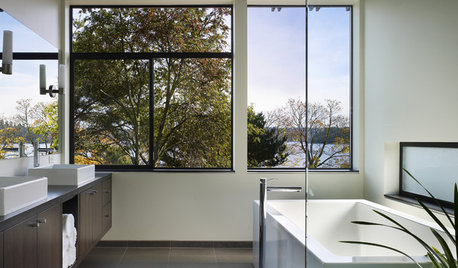
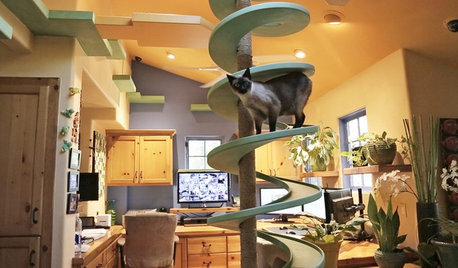
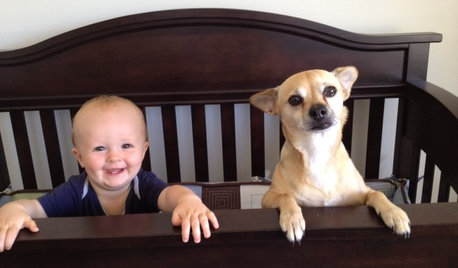
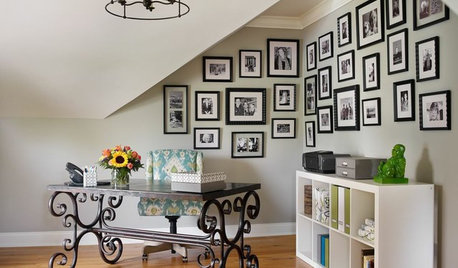




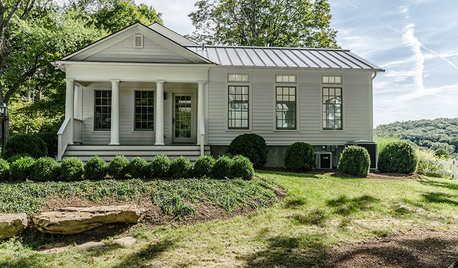







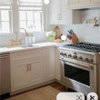
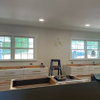

flyinghigh